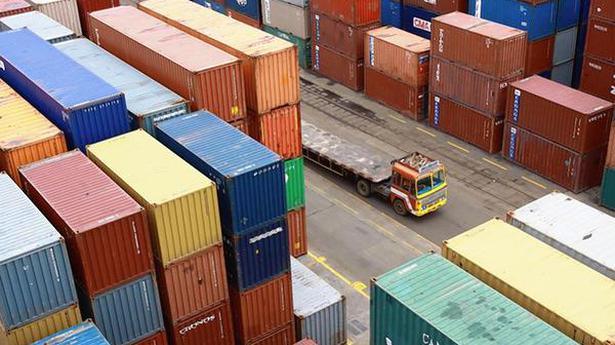
Govt. defers new foreign trade policy again
The Hindu
Industry seeks extension of current policy, citing global uncertainty
The government on Monday extended the tenure of the Foreign Trade Policy 2015-20 by another six months till March 2023, instead of replacing it with a new policy by September 30 as it had envisaged, citing requests from industry bodies.
On September 3, Commerce Secretary B.V.R. Subrahmanyam had said the government was readying a new Foreign Trade Policy which would be unveiled on September 30 as part of a package to propel goods exports that had dipped sequentially for the third successive month in August.
Noting that the policy had already been ‘extended from time to time’, the Ministry has now said that leading exporters as well as export promotion councils for different sectors have pushed for the status quo amid the turmoil in the global economy.
“In recent days, exporters and industry bodies have strongly urged the government that in view of the prevailing, volatile global economic and geo-political situation, it would be advisable to extend the current policy for some time, and undertake more consultations before coming out with the new policy,” the Commerce and Industry Ministry said in a statement.
“The government has always involved all stakeholders in formulating policy. In view of this, it has been decided to extend the Foreign Trade Policy 2015-20, valid till Sept. 30, 2022 for a further period of six months, w.e.f. October 1st , 2022,” it said.

The Union Budget unveiled on February 1, 2025, has come at a time of unprecedented global uncertainty and a flagging domestic economy. The real GDP growth is estimated at 6.4% for 2024-25 and between 6.3-6.8% for 2025-26, a far cry from >8 percent growth required annually to make India a developed nation by 2047. While much attention has been devoted to the demand stimulus through income tax cuts, not enough is said about the proposed reforms in urban development, tariff rationalisation, and regulatory simplification aimed at making Indian cities and corporates more competitive. Since the majority of economic activity is located in cities (urban areas account for ~55% of GDP) and produced by large corporates (~40% of the national output and 55% of India’s exports), the above-mentioned reforms have a pivotal role in improving India’s trend growth rate. Below we unpack each reform.












